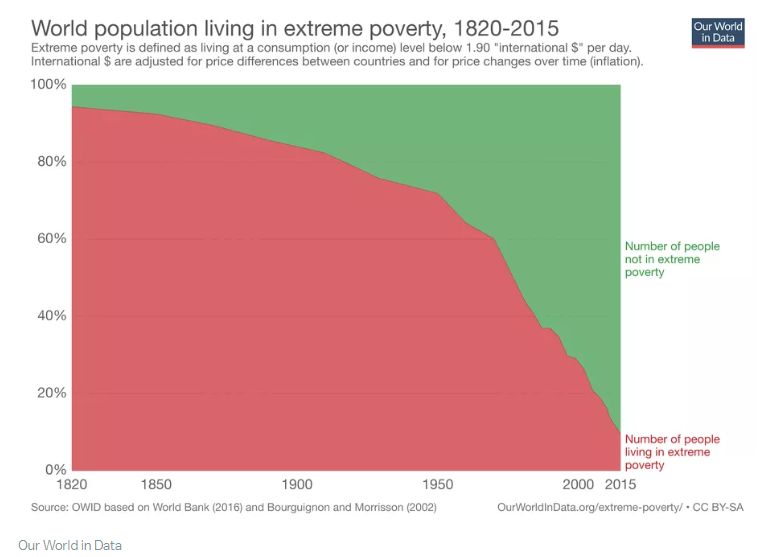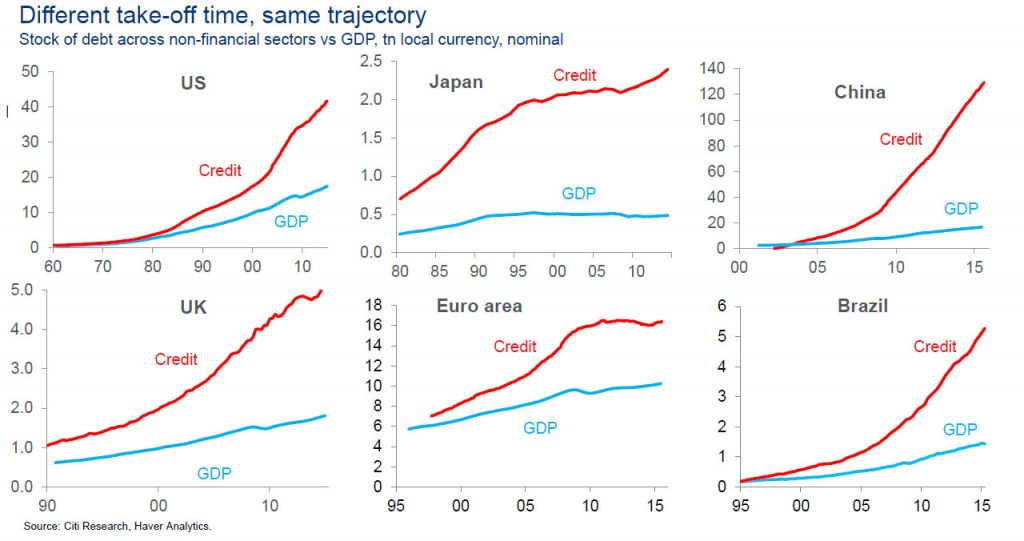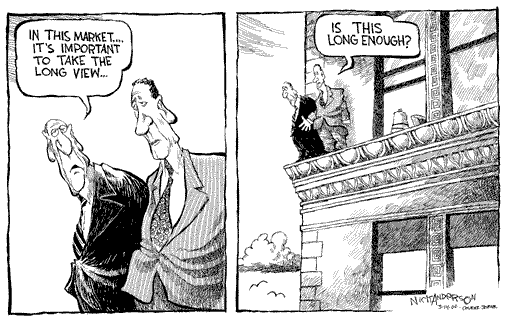Ballooning Global Debt Will Undo Poverty Improvements
Bill Gates recently tweeted a chart (see below) that showed the percentage of the world population living in extreme poverty since 1820. Thankfully, there has been a tremendous improvement in the past two centuries – 94.4% of humans lived in extreme poverty in 1820 versus only 9.6% in 2015. Of course, this chart started a lively debate about the reasons for this improvement, whether the definition of extreme poverty is correct, and so on.

The point I want to add to this debate is that there is a very real risk that soaring global debt will cause another severe economic crisis (likely a full-blown depression), which will reverse a portion of the gains made in poverty reduction, cause geopolitical instability, unrest, wars, and other unpleasant side-effects. Global debt has surged by nearly $150 trillion since 2003 and $70 trillion since 2008. As bad as the 2008 global financial crisis was, the next crisis will hit the global economy even harder simply due to the fact that an additional $70+ trillion in debt has been added. That means that governments and central banks have far less firepower with which to stabilize their economies in the next crisis.

LEARN MORE

